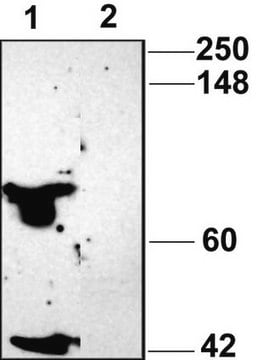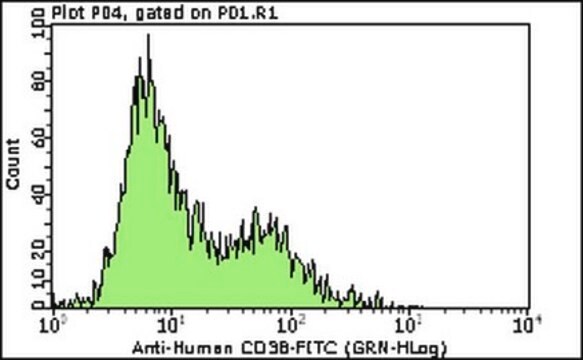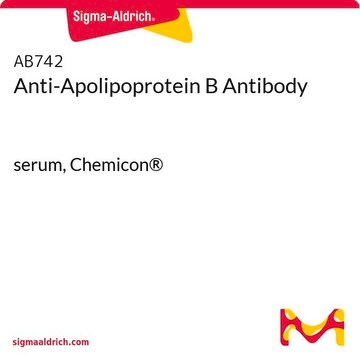詳細
P2X purinoceptor 4 (UniProt: P51577; also known as P2X4, ATP receptor, Purinergic receptor) is encoded by the P2rx4 gene (Gene ID: 29659) in rat. P2 receptors comprise P2X ionotropic receptors and G protein-coupled P2Y receptors. P2X receptors are expressed in many tissues, where they are involved in a number of functions including synaptic transmission, muscle contraction, platelet aggregation, inflammation, macrophage activation, neuropathic and inflammatory pain. P2X4, one of the most sensitive purinergic receptors, is a multi-pass membrane glycoprotein with two cytoplasmic domains (1-33 and 360-388), two transmembrane domains (aa 34-54 and 339-359), and one extracellular domain (aa 55-338). It is widely distributed in the brain and its strong expression is observed in microglial cells. P2X4 serves as a receptor for extracellularly released ATP and acts as a ligand-gated ion channel. It is shown to be preferentially localized in lysosomes, where it is protected from proteolysis by its glycosylation state. At low pH, high ATP levels in the lysosomes do not activate P2X4. However, it is activated by intra-lysosomal ATP only in its fully dissociated tetra-anionic form when the pH increases to 7.4. Hence, P2X4 functions as a Ca2+-channel following the fusion of late endosomes and lysosomes. P2X4 is reported to participates in basal T-cell activity without TCR/CD3 stimulation. It also promotes the differentiation and activation of Th17 cells via expression of retinoic acid-related orphan receptor C/RORC. P2X4 also contributes to regulation of synaptic strength through participation in the formation of long-term potentiation. Microglial P2X4 receptors are shown to be upregulated during nerve-injury associated neuropathic pain. Clone 12-10H recognize the native structure of head domain of P2X4. (Ref.: Igawa, T., et al (2019). Purinergic Signalling 15(1);27-35; Suurvälia, J., et al. (2017). Biomed. J. 40(5); 245-256; Tsuda, M., et al. (2003). Nature. 424(6950); 778-783).
特異性
Clone 12-10H is a mouse monoclonal antibody that detects P2X purinoreceptor 4. It targets an epitope within the N-terminal half.
免疫原
A KLH-conjugated recombinant fragment derived from the head domain of P2X4 receptor expressed in E.coli.
アプリケーション
Quality Control Testing
Evaluated by Immunohistochemistry (Paraffin) in rat cerebral cortex tissue sections.
Immunohistochemistry (Paraffin) Analysis (IHC(P)): A 1:50 dilution of this antibody detected P2X4 in rat cerebral cortex tissue sections.
Tested applications
ELISA Analysis: A representative lot detected P2X4 receptor in ELISA applications (Igawa, T., et al. (2019). Purinergic Signal.15(1):27-35).
Dot Blot: A representative lot detected P2X4 receptor in Dot Blot applications (Igawa, T., et al. (2019). Purinergic Signal. 15(1):27-35).
Immunocytochemistry Analysis: A representative lot detected P2X4 receptor in Dot Blot applications (Igawa, T., et al. (2019). Purinergic Signal. 15(1):27-35).
Note: Actual optimal working dilutions must be determined by end user as specimens, and experimental conditions may vary with the end user
Anti-P2X4 receptor, clone 12-10H, Cat. No. MABN2609, is a mouse monoclonal antibody that detects P2X purinoceptor 4 and is tested for use in DOT Blot, ELISA, Immunocytochemistry, and Immunohistochemistry (Paraffin).
物理的形状
Purified mouse monoclonal antibody IgG1 in PBS without preservatives.
保管および安定性
Store at -10°C to -25°C. Handling Recommendations: Upon receipt and prior to removing the cap, centrifuge the vial and gently mix the solution. Aliquot into microcentrifuge tubes and store at -20°C. Avoid repeated freeze/thaw cycles, which may damage IgG and affect product performance.
その他情報
Concentration: Please refer to the Certificate of Analysis for the lot-specific concentration.
免責事項
Unless otherwise stated in our catalog or other company documentation accompanying the product(s), our products are intended for research use only and are not to be used for any other purpose, which includes but is not limited to, unauthorized commercial uses, in vitro diagnostic uses, ex vivo or in vivo therapeutic uses or any type of consumption or application to humans or animals.









